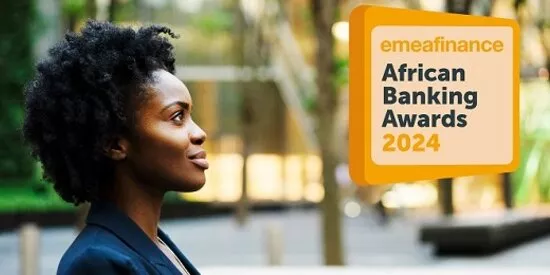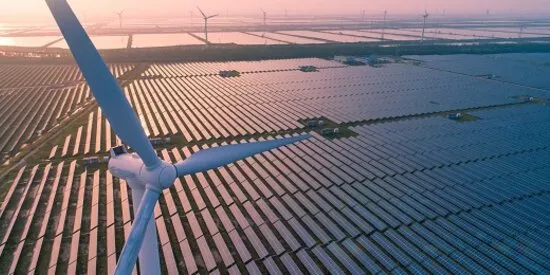
Africa's opportunity to build back better
News
Long-term financing is helping the continent create more sustainable services and build cities to combat climate change
Near the city of Ambatolampy, more than 5,000ft above the sparkling Indian Ocean, dozens of rows of sleek solar panels are providing clean, green electricity to about 50,000 households in Madagascar. The project is the country’s biggest solar power plant – a milestone in the island’s plans to transition from mainly heavy fuel oil and diesel today to 80 per cent renewable energy by 2030.
The continent is being disproportionately affected by climate change. The World Meteorological Organization (WMO) estimates that up to 118m extremely poor people across Africa will be exposed to drought, floods and extreme heat by 2030, an eventuality that threatens progress towards poverty alleviation and growth.
Indeed, a 2020 WMO report states that climate change could further lower economic growth by up to 3 per cent by 2050. “This presents a serious challenge for climate adaptation and resilience actions, because not only are physical conditions getting worse, but also the number of people being affected is increasing,” says Josefa Leonel Correia Sacko, Commissioner for Rural Economy and Agriculture with the African Union Commission.
Ambatolampy solar plant (Madagascar) - © GreenYellow
Climate change is also exposing the continent’s old and insufficient infrastructure, which is already under strain from a rapidly expanding population. Close to 600m people in Sub-Saharan Africa – roughly two thirds of the global population without power – have no access to grid electricity, for example. Even those who do have electricity generally use very little of it. According to a 2020 report by the consultancy McKinsey, the average person in Mali uses less electricity in an entire year than a Londoner consumes just to power their tea kettle.
The same report also shows that the lack of completed infrastructure projects in the region leaves Africa in danger of falling even further behind the rest of the world: electricity demand on the continent was set to quadruple between 2010 and 2040, but by 2018, only 20m people were connected to a grid, compared with 100m in the case of India.
Against that stark backdrop, as part of its Grow with Africa initiative launched in November 2018, Societe Generale has focused on high-impact-linked infrastructure projects in the region by providing multi-source financing, combining a foreign currency loan with a local currency tranche over periods that extend far beyond the horizon of Africa’s domestic banks. On an annual basis, the bank has surpassed $1bn in terms of financing transactions in Africa, and it is growing its portfolio by 30 to 40 per cent a year.
We are filling those important gaps in financing that lie between local banks’ limited capacity and the bigger development banks, which tend to focus on much bigger projects, says Mohamed El Fadel Kane, Managing Director, Head Capital Markets and Structured Finance Group for Sub-Saharan Africa at Societe Generale.
The Madagascar solar plant, which was financed to the tune of $19m over a 14-year period, is an example of how longer-term financing can make a difference to local communities, building much-needed infrastructure along more sustainable lines.
Hassanein Hiridjee, CEO of the Axian Group, says: Our partnership with Societe Generale has been purposeful and innovative. GreenYellow Madagascar [the green energy venture jointly owned by Axian and the French retailer Casino] has assumed a key role not only in the country’s rapidly growing solar energy production, but also in its strategic transition to renewables. The project itself is a prime example of how shared values can create synergistic and impactful partnerships that go a long way to championing sustainable economic growth in Africa.
The scale of the biggest projects to benefit from these fastidiously modelled funding partnerships is astonishing. Senegal’s capital, Dakar, is subject to chronic overcrowding, straining the city’s already creaking infrastructure. The population, now approaching 4m, has long outgrown the sewage and water systems, and house prices are skyrocketing. Now, barely 40km away, a $2bn brand-new city is taking shape, with the aim to provide people with modern and dependable infrastructure while alleviating pressure on the nearby capital.

© Presidency of the Republic of Senegal
Diamniadio, as the new city is called, will be home to more than a dozen government ministries, the country’s United Nations’ headquarters and a wide range of housing aimed at different income levels.
Amadou Hott, Minister of Economy, Planning and International Cooperation for Senegal, says: A resilient and sustainable city of the 21st century must be designed or reshaped to facilitate mobility, promote clean energy, provide a viable sanitation and waste treatment system, and promote environmentally sound construction. This is the option we have chosen for Diamniadio, with projects such as the Regional Express Train, which will operate in dual mode: fuel and electricity.
Societe Generale offered financing for the project under a public-private partnership known as “build-operate-transfer”, which will see ownership of the buildings in the city’s ministerial hub eventually revert to the Senegalese state. “Throughout much of Africa, governments are looking for ways to decentralise congested capitals while giving a boost to regional economic development,” says Kane of Societe Generale. “We need new cities and, around them, to have modern infrastructure that runs on green energy and reduces people’s use of cars.”
In Diamniadio, the bank has financed an electric train network linking the city to Dakar and the airport beyond. It has also given loans for the construction of one of at least two sports stadiums in the city, including a solar power plant that will generate clean energy for the facility and surrounding infrastructure.
Most importantly, perhaps, Societe Generale is issuing long-term financing for Diamniadio’s water, sanitation, road and electricity network, ensuring that businesses and residents moving there will have full access to services that will stand up to the requirements of an expanding population, as well as the demands of climate change. As Kane says: “Climate change is a reality, and we need to prepare for the impact that it will have on the region.”





